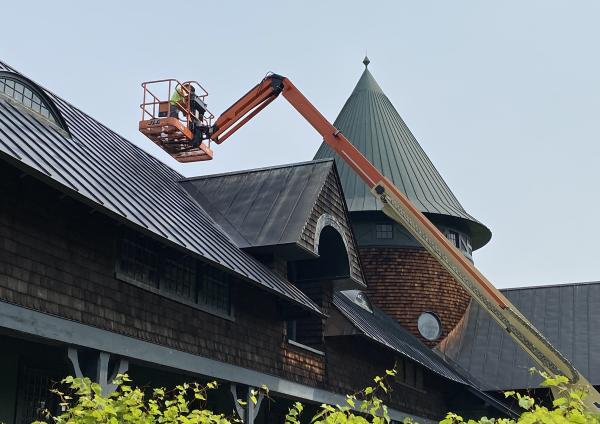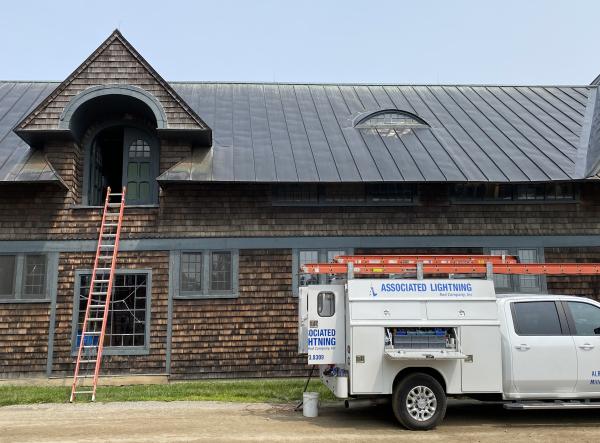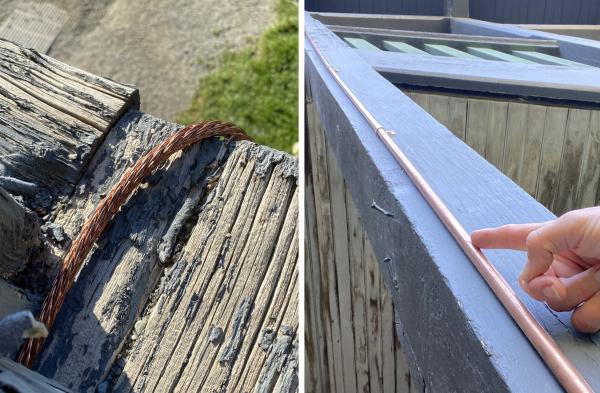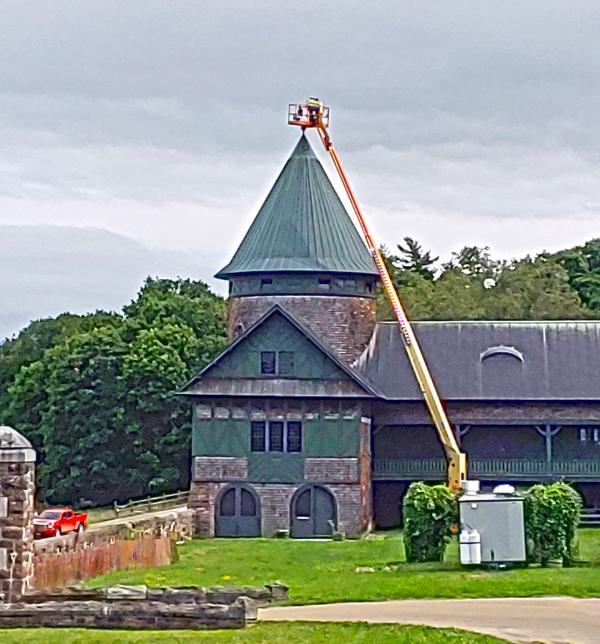Ensuring our Campus' Future with Lightning Protection
As we reported in last month's blog about chimney repairs at the Inn, the relative quiet of the buildings throughout the summer and fall opened up opportunities for new building enhancements. And we’ve been taking advantage. In addition to tackling chimney repair, we’ve used this quieter time to upgrade lightning protection at the Coach Barn, Farm Barn, and Inn. These projects are helping to revitalize and strengthen our historic campus for learning.
The sad loss of the Old Dairy Barn to lightning fire in 2016 precipitated a full evaluation of lightning protection among the buildings at Shelburne Farms, and an investigation into best practices for installing protection on our historic structures. Some lightning protection was already in place (and it’s unclear whether lightning rods alone would have saved the 1890s barn), but we knew we had to develop a more comprehensive plan and act on it.
That action began at the Breeding Barn, where we added a lightning protection system in June 2019. (A fire protection system is now in the works.) This summer, we turned to the other side of our campus. Associated Lightning has now installed lightning protection systems at both the Farm Barn and Coach Barn, two buildings critical to our education programs for educators and students. Work continues at the Inn until the snow flies!
An effective lightning protection system involves several elements, but only some are visible to observant visitors. These include 12-inch high rod “terminals'' that are positioned every 20 feet along roof ridgelines. That distance is the industry standard, ensuring that any lightning strike will hit a rod, not the space in between. Those rods are then connected to exterior copper cables. The terminals accept lightning strikes and route the strong electrical charge through the cables to a grounding system, keeping the charge away from the building’s (flammable) materials and contents. Additional elements (“bonding” and “surge protection devices”) further control the path and power of the lightning.
We are so grateful to donors and to Associated Lightning for their commitment to protecting the buildings of our educational campus for years to come.




